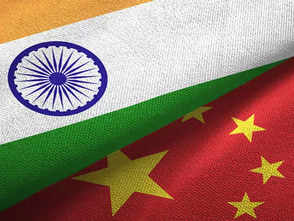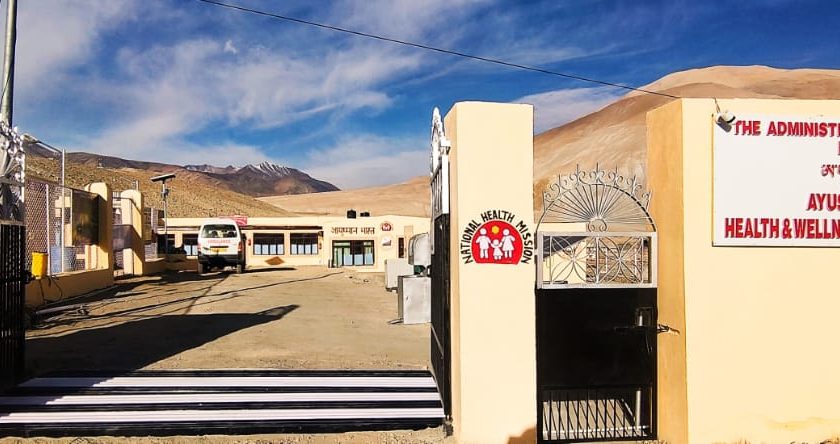While India wants China to restore status quo ante of April 2020, Beijing apparently feels that Modi government will come to terms with the new normal on LAC and revive ties in the coming months and willy-nilly accept the rise of the Middle Kingdom.
This month, External Affairs Minister Subrahmanyam Jaishankar has made repeated public statements stating that the only way for restoring frozen India-China ties is to untangle the four friction points in East Ladakh by disengaging and de-escalating the military situation along the 1597 km Line of Actual Control (LAC).
The Chinese on their part are indicating that the People’s Liberation Army (PLA) has established a new normal in East Ladakh by transgression and India should move to restoring bilateral ties by accepting the new LAC. Beijing wants India and China to celebrate 70 years of establishment of bilateral ties and move to restore economic ties. That boundary dispute should be kept separate and resolution parallel to growth in economic ties has been the Chinese narrative since the days of Deng Xiaoping.
While the previous Indian regimes believed that being soft to the PLA on border was a sure recipe for a peaceful and tranquil LAC, this was taken a sign of weakness by the Beijing rulers who time and again tried to change the unresolved line from Shaksgam Valley in Karakoram to Kibithu in far east Arunachal Pradesh. Even junior diplomats from China heckled India for referring to Tibet and Xinjiang or on Indian leaders travelling to Arunachal Pradesh. Buddhism teacher and 14th Dalai Lama was called a terrorist by China but Pakistani Masood Azhar, a terrorist who has spilled the blood of hundreds in India, was a religious-political activist as Beijing blocked his designation as global terrorist no less than four times.
Maybe PLA expects Indian Army to accept the new normal after looking at the roadmap of New Delhi’s relations with Beijing’s iron brother Pakistan over decades, where India has always come around to the dialogue table after every crisis. Indian resilience is seen as a sign of weakness.
Today 19 years ago, five Pakistani terrorists of Masood Azhar’s Jaish-e-Mohammed group struck at Indian Parliament while it was in winter session killing nine security personnel and civilians. Much as we have tried to gloss over the event, the brutal fact is that had the terrorists managed to gun their way into the Houses in session, the entire Indian political leadership would have been held hostage by radicalised thugs. The national humiliation of such an event would have made look the 1999 hijacking of IC-814 flight to Kandahar and subsequent release of three top Islamist terrorists including Azhar in lieu of over 170 passengers a trifle. Yet, in January 2004, India started the dialogue with Pakistan, who again gave a facile commitment that it would not allow its territory by terrorists to target India.
One thought that the 26/11 Mumbai massacre would have been the turning point for India-Pakistan relations with this time Pakistan’s other terror export Lashkar-e-Taiba (LeT) gunning down innocents in the heart of India’s commercial capital. Despite nearly 200 innocents getting butchered in Mumbai, there was no retaliation from India with so-called strategists buying the Pakistani narrative of an imminent nuclear war. This time again, dialogue with Pakistani was resumed in 2010 with counter-terrorism, Mumbai attack trials and humanitarian issues added to the menu.
Prime Minister Narendra Modi called it a day on Pakistan after January 2016 attack on Pathankot airbase by Azhar’s Islamist troopers again. Had it not been for alert Indian security agencies led by National Security Advisor Ajit Doval, India would have been humiliated again if the terrorists had managed to blow parked MiG-21 Bison fighters to smithereens. Not only all the fighters were removed from the airbase but even the then Pakistani NSA Naseer Janjua was informed about the impending attack on January 1 night itself. Documents found on the terrorists indicated that the attack had been given a green signal, the day PM Modi impromptu landed in Lahore on December 25,2015 in a genuine effort to promote ties with Islamabad.
The June 15 Galwan Valley skirmish in which men of 16 Bihar led by Col Santosh Babu retaliated to the PLA aggression on the LAC is one such tipping point with China. On that day, India lost 20 of its brave soldiers including Col Santosh Babu in Galwan Valley as they were overwhelmed in numbers by the aggressive PLA soldiers armed with barbed wire sticks and spears. The Indian soldiers retaliated in full measure with the adversary PLA losing more men in the hand to hand fight including their own commanding officer. Hopefully, the Indian Army will honour the brave Santosh Babu and four other personnel on 2021 Republic Day.
While India wants China to restore status quo ante of April 2020, Beijing apparently feels that the Modi government will come to terms with the new normal on LAC and revive ties in the coming months and willy-nilly accept the rise of the Middle Kingdom. After all, the so-called tiger ASEAN nations have consigned the Chinese aggression in the South China Sea to merely a talking point on bilateral agenda with Beijing. Prime Minister Narendra Modi should not even entertain such a thought.






